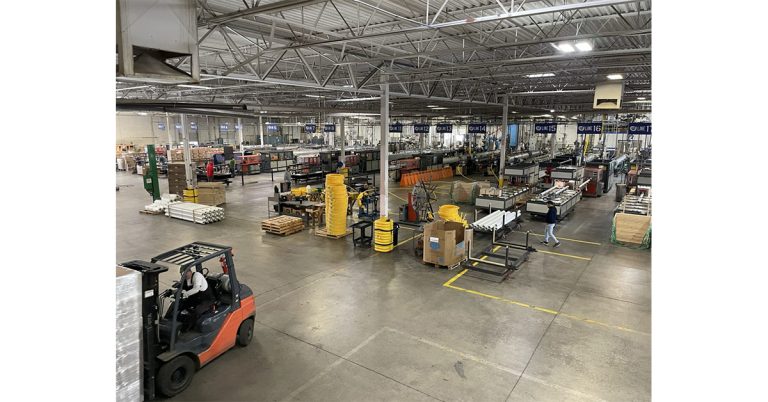ABB’S Natalie Pilon on Energy as a Determining Factor in the Canadian Economy

December 14, 2016
Appearing below are remarks made by Nathalie Pilon, President of ABB Canada to the Canadian Club in Montreal on November 28.
Today I’m going to talk to you about energy and the changes that will influence this sector of activity, which is a key factor for Canada’s economy now and in the years to come… There is a lot of discussion in Canada right now about what we need to do on many fronts, whether in transportation infrastructures, clean technologies for industrial and institutional use, or development of our natural resources. Whether in Alberta or Quebec, British Columbia or Newfoundland, all Canadians want affordable energy, clean and efficient transportation, and sustainable communities. And when we say sustainable communities, we’re not just talking about the environmental impact on these communities but also their economic survival so that they can continue to prosper, reinvent themselves and thus ensure their continuity.
The polarizing discussion on regional disparities and behaviours with regard to climate and the environment does not answer the simple question: What future do we want for our country and its economy based on the resources we have in Canada?
As a Canadian, I believe that to address this question we must focus on three broad sectors: manufacturing, transportation and energy.
Advanced manufacturing
As someone with over 20 years of experience in the manufacturing world, I have a special affinity for this sector, and I believe that designing and producing things in this country is not only desirable but essential for our economy to flourish. The manufacturing sector provides sustainable employment, enables commercial innovation, and contributes to reducing trade deficit as well as to promoting sustainable development. Increasing the transformation in Québec of our own natural resources would also greatly contribute to our economy, but to do this we need to attract investments. However, the jobs we have long associated with manufacturing are disappearing. Although they still represent 11% of the gross domestic product, they are down from 17% in 2002. One of the reasons behind this drop is lack of investment in technology to keep our factories competitive.
Productivity in manufacturing relies on our capacity to invest in technologies such as automated processes and robotics. Data from the International Federation of Robots shows that between 1993 and 2007, the use of robots in manufacturing raised the annual growth of labour productivity and the worldwide GDP by 10% and 16%, respectively. It also shows that the countries with the highest penetration of industrial robots (i.e., Germany and South Korea) also enjoy the lowest unemployment rates.
We are now in the midst of what many call a fourth industrial revolution, also known as “Industry 4.0.”
One of the concerns that many of us have is the relationship between automation and employment. The purpose of technology is to make a better world. If we use these technologies smartly, we will create work. The problem is that we often don’t make the distinction between jobs and work. There has never been an industrial revolution where the jobs haven’t changed. Work will always be there; the jobs are changing. The final word for employment in this new age is that low-skill jobs will be replaced with new higher-skill roles. A prime example of this is the evolution of our means of transportation. People will always need to be transported; we don’t use horses anymore, but there will always be jobs associated with this activity. The work to be performed is different.
Robots and automated systems will do the more dangerous and repetitive jobs, allowing workers to focus on tasks with higher added value. We must also make sure to integrate these technologies into the human environment rather than keep robots in cages for health and safety reasons, as is currently the case. We need to make sure that robots are integrated with the workers. To do this, we need to transform the skills of the workers and make sure that workers participate in the integration of these new technologies in their daily lives, so that Canada can transform itself and create a better sustainable future.
Electrified transport
In a different vein, we must rethink our transportation sector to integrate new technologies such as electrically propelled systems. Transportation accounts for 31% of all energy use in Canada and 37% of all greenhouse gas emissions. Electric drive is extremely efficient due to the fact that electric motors convert around 90% of the input energy to traction compared to 40% for diesel engines and 30% for gasoline.
Electrified transport is not just hybrid cars and metro lines. Think electric propulsion for ships, electric cranes at ports, electric forklifts in warehouses, and electric big rigs recharging while their drivers sleep. All of these ideas are feasible today, or are already in widespread use, as shown in the image on the screen.
Canada, however, is also the fifth largest producer of oil and gas in the world. Our natural resources sector is an important part of our economy, and it is likely to remain so for the foreseeable future as the global economy transitions from high-carbon energy sources to lower-carbon alternatives. This evolution (and not revolution) speaks to an “all-of-the-above” energy strategy, one that is recognized in the Quebec Energy Policy, which for example calls for a network of electric vehicle charging stations that also offer hydrogen and natural gas.
The question of energy development and which choices to make in the long run have to take into account not only environment and efficiency but also plausible hypotheses on supply and infrastructure. The federal government’s New Building Canada Fund and the investments that will be made by provincial and municipal governments for their communities will determine the future of the energy mix.
We are a long way from widespread adoption of electric vehicles, and there are supply issues for both for electric vehicles and charging infrastructures. The recent federal budget of Canada recognizes this with generous tax incentives allocated to transport systems that permit the furthest travel distances. This pragmatism is essential if we are to execute a smooth transition to a low-carbon transportation sector.
In Quebec, however, we have made major progress in the past few years with approximately 1,000 public charging stations in operation. Quebec is on the right track, but further efforts are needed to establish an infrastructure that encourages the development of sustainable transportation modes. In addition, it must be noted that there are currently 12,000 electric vehicles in Quebec, and that the objective for 2020 is 100,000 vehicles. We have more than 4.5 million vehicles of all types registered in Quebec.
Energy at the core
By now it should be obvious that Canada’s goals for the economy and the environment are predicated on a fundamental change in our energy supply chain. Whether the end use lies in industrial production, private transportation, or residential lighting and heating, we must increase efficiency and productivity at every step in the process while we seek to reduce our overall environmental footprint.
We are facing two key global trends in Canada.
One is the shift to renewable energy and a power grid that enables not only the wider use of wind and solar but that supports technologies like energy storage, demand response and microgrids—all of which can improve sustainability while also increasing reliability.
The grid of the future will be much more complex with multiple feed-in points from traditional power plants, remote wind farms and rooftop solar systems. New industry players will compete in the wholesale generation market by aggregating real-time reductions in demand from the thousands of consumers who will reduce their consumption. The grid itself will become more intelligent, anticipating disturbances and taking action before they occur. Managing this complexity will require a host of new technologies, many of which are already commercially available or in the process of being developed.
The second big trend lies in automation where advances in sensor technology, combined with ubiquitous connectivity and an ever-growing capacity to process and store data, are enabling machines to be more and more intelligent. This is the basis for the Internet of Things, to which can also be added of Services and People. For example, engineers and service specialists are already able to support remote sites like mines and offshore platforms from offices thousands of miles away through the use of video and real-time data feeds from devices in the field. Applications like this will dramatically reduce the energy required to produce goods and services.
I cannot address the topic of energy without talking about our natural oil and gas resources. Here are a few facts that are important to know:
- Canada is a world leader in the development of innovative technologies for reducing greenhouse gases in the production of energy. The industry established COSIA to coordinate the efforts in such matters.
- Greenhouse gas emissions from the oil sands are lower than the comparable productions of California, Mexico and Venezuela.
- Canada is the only one of the top 10 oil producing countries to have a specific framework for reducing greenhouse gases with a carbon tax, a world-class regulatory control environment, and a ceiling on the emissions generated by oil sand production.
- By ongoing investments on innovation and by operating within a cost constraint framework, the companies operating in the sector can compete with a $40-$50 barrel.
- The Native communities are very well integrated in the sector’s supply chain which provides employment and development opportunities for young people in northern communities.
- This industry’s health is important for Canada as it constitutes more than 20% of our exports, contributes more than $20 billion to the public coffers, and more than $4.6 billion a year is spent outside of Alberta in goods and services.
- Finally, our pipeline companies have stepped up their commitment to the security and integrity of the grid, and have developed better technologies to build the next infrastructures.
Although we need to focus on a cleaner economy, let’s work at integrating our resources into the intermediary solution, so that we may thus have a better chance of reducing our impacts on greenhouse gases not only in Canada but worldwide. We don’t seem to pay the same attention to the greenhouse gas emissions or human rights issues of countries from which we import oil, so I would personally prefer that we become self-sufficient as far as energy resources are concerned, and work with these companies to reduce our impacts.
We also must acknowledge, now more than ever, that we need to step up to our mark on the world stage in the agreements such as COP21 and COP22 and develop a greater diversity of business relations to ensure our country’s economic health and reduce our dependence on our neighbours to the south.
In closing, to maintain our leadership on the world stage, Canada must invest in technologies to improve its productivity and in training for its workers to support them in this transition.
We must transform our transportation modes by integrating clean technologies to reduce our greenhouse gas emissions and adapt our power networks to include various supply sources. We must work toward the ideal of a greener future by integrating the players that brought us to where we are now, so that they may be part of the solution and, most importantly, we must continue to reward and encourage innovation. (Switzerland invests 3% of tis GDP in research and development.)
Canada has all the energy resources it needs to build a sustainable and prosperous future for its economy and its people. Getting there will require change in many areas, but from my vantage point within the company that I head and which participates in these changes, I am confident we will get there, if together we realize the potential that is ours to exploit.
ABB is a leader in matters of energy and automation technology. Its customers operate in the fields of public services, industry, transportation, or infrastructures. ABB is present in more than 100 countries, and in Canada has nearly $2 billion in annual sales and more than 50 facilities.











